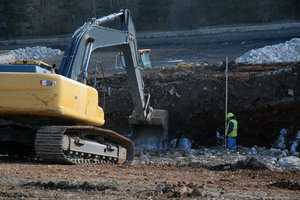Students, developers and anyone else who can work a computer is invited to participate in a U.S. Department of Labor challenge.
Officials are conducting a Workplace Safety and Health Challenge. What they’re asking for is a tool that helps to convey the importance or taking the proper precautions to prevent accidents in the workplace and to help employees to understand their rights on the job. There are many ways that you can enter this competition. You can make an app for a smartphone, for internet browsers and even for social networks. It’s all up to you. All you have to do is make sure that it’s submitted by the 30th of November.

“New technologies have the promise of making our safety and health resources even more accessible for workers and employers,” said Dr. David Michaels with OSH.
Our Boston workers’ compensation attorneys understand that recognizing work dangers and recognizing your rights in the workplace are effective ways in preventing accidents in the workplace. While it’s the employer’s job to make sure that each workplace is safe for everyone involved, it’s also important that you’re doing whatever possible to stay safe on the job.
Each Entry Should:
-Make sure that workers understand the importance of knowing exactly what their specific industry’s work hazards and dangers are.
-Make sure that workers of all ages, especially young workers, understand the dangers of their job and understand the serious consequences that stem from on-the-job injuries.
-Provide information regarding safety and health from the Occupational Safety and Health Administration (OSHA). Provide information including standards and regulations for each workplace and for each industry.
-Provide work accident statistics and work-related risks from the U.S. Department of Labor. You can include some of the most commonly experienced work accidents and which industries these accidents occur in. Which people are at the highest risks?
-Help workers to understand their state’s workers’ compensation programs and other government resources for dealing with work accidents. What are you to do in the event of a workplace accident? What are you entitled to under state and federal law? What compensation do you deserve for your injuries?
-How management should address work hazards, including personal protection equipment as well as various engineering controls.
-Help employees to understand the rights that they have in the workplace. You have rights on the job that must be respected by employers and coworkers. What are these rights?
-Help workers to understand their employer’s responsibility toward their safety on the job.
-Include a feature that allows this information to be shared with different parties.
There will be a panel of judges looking through the submissions looking for the most creative and the most defective one. Included in this panel is Jamie Hyneman and Adam Savage from “Myth Busters,” Hilda L. Solis, the Secretary of Labor and Arne Duncan, the Secretary of Education. The first prize winner will get $15,000. Second place will get $6,000 and third place will get a $3,000 prize.
Continue reading
 Massachusetts Workers Compensation Lawyers Blog
Massachusetts Workers Compensation Lawyers Blog












